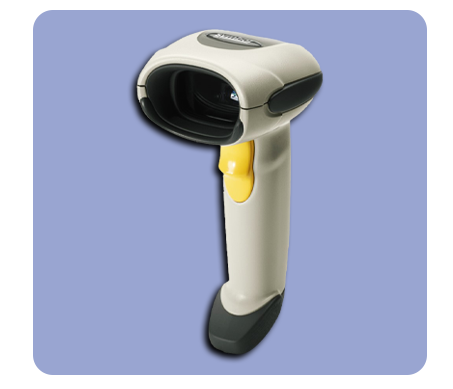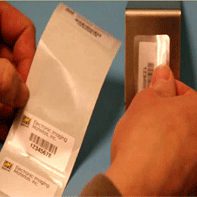So you don’t know which scanner you need for your barcode? Well, that is quite a dilemma. But EIM is here to make things a bit easier for you. All you need to know is right here:
If you are looking for a handheld scanner, then there are two dominating technological types to choose from.

• The most popular hand-held scanner is a laser scanner. This scanner uses a beam created by a laser diode (a laser semiconductor), that is rapidly reflected to read the barcode. The light that is emitted sweeps the barcode so fast― approximately 40 scans per second―that it looks like there is a single line of light. The scanner reads the light that is reflected back using that information to decode the barcode. The “depth of field” or how far away the scanner can be and still read the barcode is usually six to twelve inches away. However, with laser technology it is also possible to have long-range capabilities if a special reflective long-range label is used. This technology only reads traditional, linear 1-dimensional barcodes and some stacked barcodes.
• The second type of hand-held scanner is called a CCD (charge-coupled device). A CCD is a unit with a semiconductor chip that houses light-sensitive elements which convert light signals and images into electrical signals. A CCD usually uses light emitting diodes (LEDs) that reflect an image to its photo-sensors. It measures ambient light versus reflected light at a specific frequency much like laser scanners but the light is stationary and thus the system has no moving parts which makes them more rugged than laser models. While the depth of field is typically small (from contact up to about six inches), these image-based scanners are quickly gaining popularity due to their high speed read rates. Another upside is that it reads 2-dimensional barcodes as well as 1D and stacked barcode making them much more all-purpose and handy if you plan to upgrade to a newer barcode symbologies.
Both laser and CCD technologies are available as fixed-mount scanners and are used throughout all industries fast becoming an integral part of database management. These scanners are fixed in one position and are commonly seen in grocery stores, work-in-process manufacturing, and warehouse / distribution applications. Small fixed mount units are popular in laboratories and process control applications.
There are also wireless, non-corded, Bluetooth enabled options in many models letting you move freely about your facility and return to a docking cradle. This feature is very popular in warehouse situations or hospitals.
When choosing a handheld scanner, you will want to consider not only the technology and hand-held vs. fixed mount designs, but what your environmental conditions are. What barcodes will you be using and how big are your labels? How far away do you need to scan your barcodes? Do you need to move about and not be tethered to a cable? What type of connections will you need to your computer system?

Here at EIM we have narrowed down confusing scanner choices to a few popular models. If you don’t find what you need here, let our Label Experts help you.

LS2208 – This is a good general purpose handheld scanner offered at an affordable price. Designed for scanning up to 17 inches, it is ideal for retail, libraries and healthcare.

LS4208 – This is specially designed to read small barcodes or barcodes in poor condition. It is a rugged unit―great for warehousing, retail, hospitals and labs.

LS3578-ER – This rugged, cordless (wireless) long-range scanner lets you move about and easily read retro-reflective warehouse labels from up to 45 feet away.
We’ve also added one unit to fit our modern world of internet communications. Instead of bulky portable data terminals (PDTs), these units are extremely light-weight and ergonomic.




